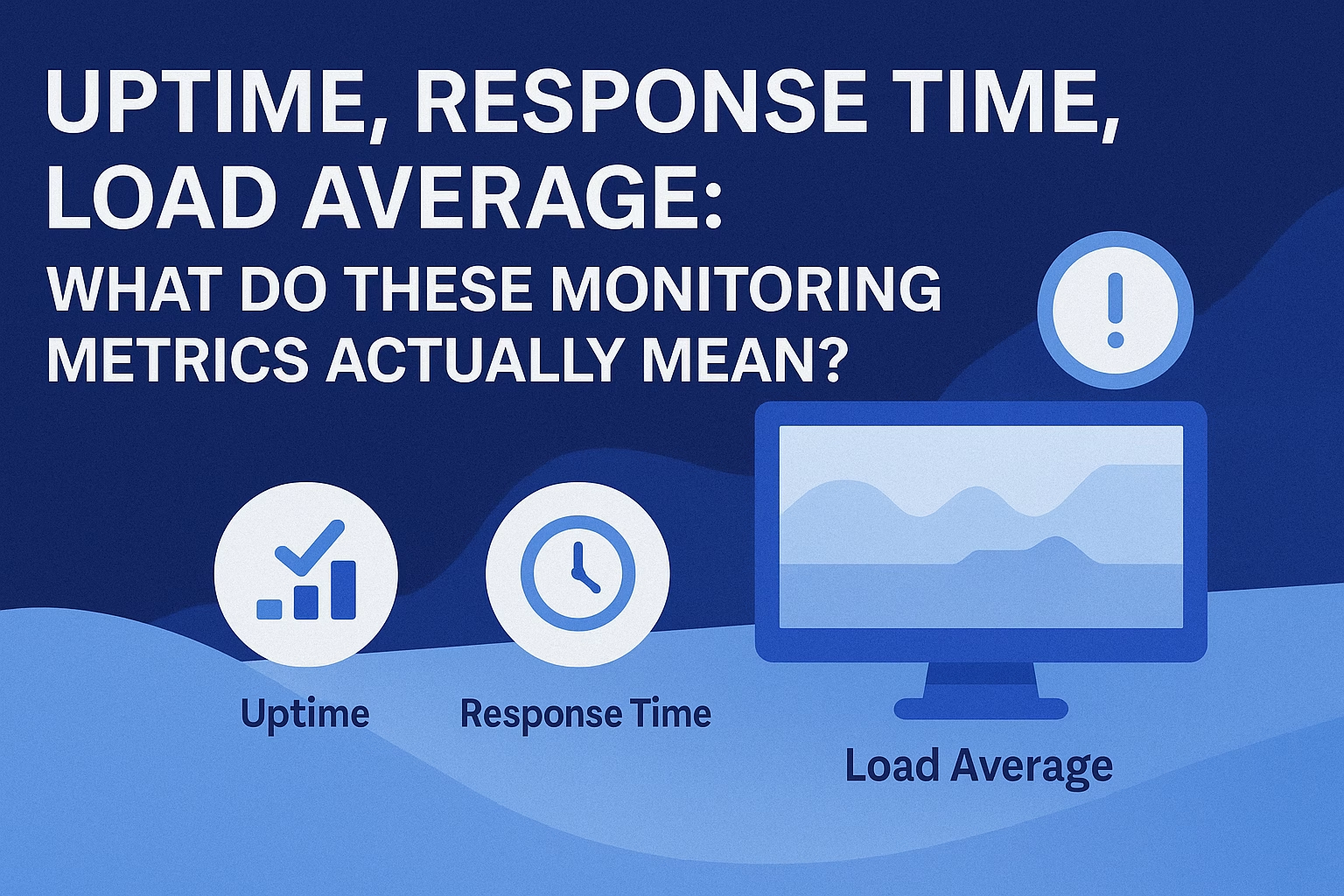You just set up 360Monitoring (or another monitoring tool) and suddenly you’re seeing charts and numbers like:
-
Uptime: 99.84%
-
Response time: 782 ms
-
Load average: 2.61
Looks impressive — but what do these numbers actually mean?
And more importantly: what do they tell you about your website or server’s health?
Let’s break it down.
⏱️ Uptime – The Core Metric of Reliability
What it is:
Uptime refers to the amount of time your website or server is available and accessible.
If your site is up for 364 days in a year, that’s ~99.73% uptime.
Why it matters:
-
High uptime = more trust from users and search engines
-
Low uptime = lost revenue, poor SEO, unhappy customers
What’s a good number?
-
99.9% = Industry standard (less than 9 hours downtime/year)
-
99.99% = Excellent (less than 1 hour/year)
How 360Monitoring helps:
It checks your website from global locations every minute, so you’re alerted the moment downtime happens — even if it lasts just 30 seconds.
⚡ Response Time – The Speed of Your Site
What it is:
The time (in milliseconds) it takes for your site to respond to a request — not full load, but first response.
Example: 850 ms = 0.85 seconds
Why it matters:
-
Slow response = users bounce
-
Speed is a ranking factor for Google
-
May indicate deeper server or database problems
What’s a good number?
-
Under 200ms: Very fast
-
200ms–700ms: Acceptable
-
Over 1,000ms: Needs attention
How 360Monitoring helps:
You’ll see real-time and historical trends. If your response time starts creeping up, you can act before users complain.
💻 Load Average – The Pulse of Your Server
What it is:
Load average tells you how busy your server is. It reflects the number of processes waiting to be handled.
It’s usually shown as 3 numbers:
1.52 1.89 2.17= average load in 1, 5, and 15 minutes.
Why it matters:
-
A low number = your server is healthy
-
A high number = server is under stress (CPU, disk, memory)
What’s a “high” load average?
-
For a 1-core CPU, load > 1.00 = overloaded
-
For a 4-core server, load < 4.00 is okay
-
Sustained high load = slow site, timeouts, errors
How 360Monitoring helps:
You get live graphs and alerting. If load spikes suddenly, you can scale resources or investigate app issues quickly.
🔔 Bonus Metrics You Might See
| Metric | Meaning |
|---|---|
| Disk usage | How full your storage is |
| RAM usage | Memory consumption (too high = crash risk) |
| HTTP status | 200 = OK, 500 = Error, 503 = Overloaded |
| SSL expiry | Days left before your certificate expires |
| Ping latency | Basic server responsiveness check |
✅ Final Thoughts
Knowing your uptime, response time, and load average is like knowing your blood pressure — you don’t always feel the symptoms until something breaks.
With 360Monitoring from PLiKhost, you don’t just see these numbers — you get alerts, reports, and trends to act on.
🟢 Add 360Monitoring to your PLiKhost account today and start monitoring your website and server health like a pro.






